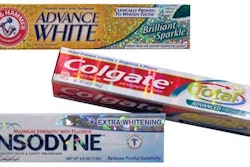In the leading-edge cases, the package became the product. (Think GoGurt and Minnetonka brands. Later, Method dish soap and others continued and ought to be in an “Innovation Hall of Fame.”)
Those leaders drove an evolution that moved packaging from being a tactical, technical support function to a strategic business function. Companies like P&G, Kraft, Clorox, and Apple found ways to integrate that idea into their corporate DNA. They fostered business functions and trained people to think strategically about packaging.
We’ve all seen momentum grow as packaging emerges from being a technical function to become a business function. What’s the biggest challenge now? Helping packaging professional continue to grow as strategic thinkers. It involves honing the skills to leverage packaging’s value to their organization’s advantages. Any answer is complicated by this factor: Today’s professionals also have to grow into the leadership roles being vacated by the wave of retirements among those who led a few years ago.
Here are seven areas where professionals need to focus. They are not the only areas, but they are key to success. (A “tip of the hat” to my colleague Mike Richmond who helped shape these ideas.)
1. Define the packaging development process as a strategic exercise where packaging professionals lead multi-disciplinary teams. Know the process has to extend all the way to the end of the package’s life.
2. Take ownership of consumer insights on packaging. New research methods extract consumer emotional and logical insights from the First Moment of Truth through repurchase.
3. Know that design is a holistic process. We’ve come a long way from the days when marketing threw the product concept “over the wall” to packaging with about three months to launch and said, “Make it pretty.” The design process has to encompass everything from consumer psychology to end-of-life scenarios for the package.
4. Be an Innovator. In particular, look at open innovation as a tool that delivers results. Here’s a key issue—doing innovation well means that today’s packaging professional has to be able to sell ideas within their organization.
5. Know where science and technology are taking packaging. Achieving any of the first four ideas requires a three- to five-year horizon, at the minimum. Be sure to know what materials and process changes are on that horizon. They could deliver a discontinuous change, and the rewards may be bigger on the leading side rather than the following side.
6. Stay current with retail trends. Retailer “clout” continues to grow. One area is retail-ready packaging; when do you really need to be ready for it in the United States vs. Canada or Europe?
7. Be aware of global laws and regulations. Programs such as REACH and extended producer responsibilities are among the most visible. You have to factor them into packaging development plans.
Here’s what it all boils down to: What is the best way for today’s packaging professionals (and tomorrow’s leaders) to gain the knowledge they need? The knowledge to focus strategic thinking. We are kicking around some ideas and would certainly welcome your input. If you have thoughts on how best to bring packaging professionals the tools they need to enhance packaging within their organizations, please let me know.
ABOUT THE AUTHOR: Jim Peters is a PTIS associate and executive director of the Packaging Education Alliance.
Email him at [email protected]. (www.ptisglobal.com)

























